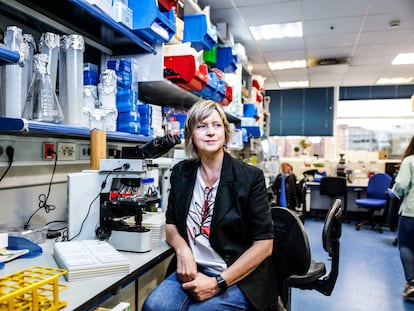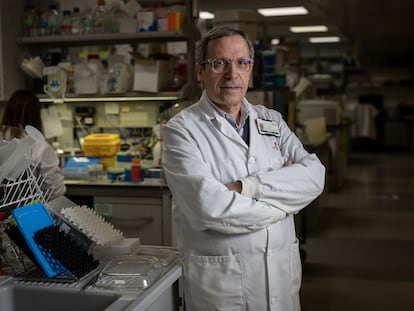A genetic patch corrects a rare syndrome in human brain organoid grafted into a rat
The team led by Sergiu Pasca, from Stanford University, wants to test this promising strategy in children with Timothy Syndrome, which is associated with autism and epilepsy
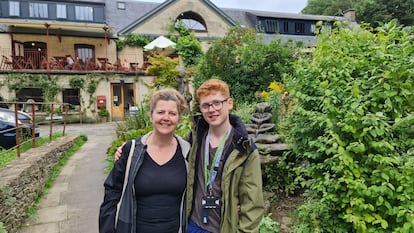
A Romanian doctor named Sergiu Pasca surprised the world two years ago by integrating human neurons into the brains of rats and getting them to participate in the animals’ behavior. Pasca, from Stanford University, has now gone one step further. His team created human “brain organoids” using cells from children with Timothy Syndrome, a rare genetic disorder associated with autism and epilepsy. Researchers then grafted these personalized cerebroids into rats and managed to correct the boys’ genetic defect in them. Pasca explains to EL PAÍS that this promising strategy could be used in other neurodevelopmental disorders, such as intellectual disability, in addition to autism and epilepsy.
The cause of Timothy Syndrome is a mutation in just one of the 3 billion chemical letters in a person’s DNA. This variant can cause multiple congenital anomalies, such as heart malformations and the fusion of fingers and toes. Pasca’s group has developed a kind of genetic band-aid —technically called antisense oligonucleotides— to patch the children’s mutation in the human cells integrated into the rat brains. Apparently the solution works. Their results were published Wednesday in the journal Nature.
Pasca, born in Transylvania 42 years ago, intends to start a clinical trial as soon as possible, in 2025 if possible. “We have to make sure that it is a safe treatment and that there are no unforeseen side effects. Most of our current work is focused on checking security,” he explains. There are only 70 known diagnosed cases of Timothy Syndrome worldwide.
Sophie Muir is the mother of one of those affected individuals, 16-year-old Calvin. The boy himself explained his desperate situation in a mini-documentary three years ago: “There are about 43 patients alive in the world, most of them children like me.” The prognosis is very variable, but many die before reaching the age of three. The new research is a ray of hope, says Muir, who is the chair of the Timothy Syndrome Alliance, an English organization that brings together scientists and families from around the world. In her opinion, Pasca’s experiment “elegantly demonstrates a route to a possible cure.”
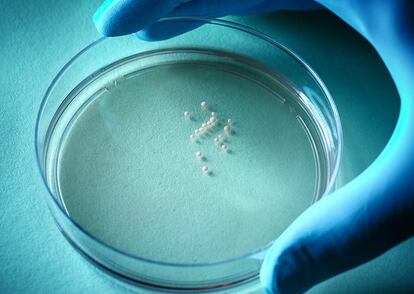
The Stanford team took skin cells from three children and, using a chemical cocktail, reprogrammed them to return to their embryonic state, a stage in which they can become any organ in the body: heart, lung, liver, brain. In the laboratory, researchers guide these stem cells to transform into organoids with neurons from the cerebral cortex or other types of nerve cells, even forming circuits between them, in structures that Pasca has named assembloids. Finally, these assembloids, with a few million cells, are grafted into the brains of newborn rats, genetically modified to lack an immune system and avoid rejection of the transplant. These are the sophisticated guinea pigs that can help illuminate the enigmas of the human brain, a much more complex organ with some 86 billion neurons.
Sophie Muir is aware that there is “a long way to go,” but considers the progress “revolutionary.” “The possibility of a clinical trial is wonderful, but it is crucial to balance the risks with the need for safe and validated therapies,” she explains. Psychiatrist Jack Underwood, a researcher at Cardiff University and head of the alliance’s scientific committee, also applauds the new experiment. “It’s a proof of concept. It shows that it is possible to make personalized therapies,” he says.
Italian biologist Silvia Velasco works at the University of Melbourne (Australia) with brain organoids to investigate childhood disorders. This scientist calls for using this strategy to search for treatments for genetic diseases that are currently incurable. “Neurodevelopmental, neuropsychiatric and neurodegenerative disorders could benefit from this approach,” she believes.
Velasco previously worked at Harvard University and at the National Hospital for Paraplegics in Toledo, Spain. She is optimistic but cautious. “The results described by Pasca are encouraging, but translating these findings into the clinical world will require a more exhaustive analysis of the specificity, efficacy and toxicity of this therapy,” she warns. In a commentary published in Nature, Velasco recalls that 90% of promising experimental drugs in animals have failed in human trials in the last 15 years, a percentage that is even higher in disorders of the nervous system.
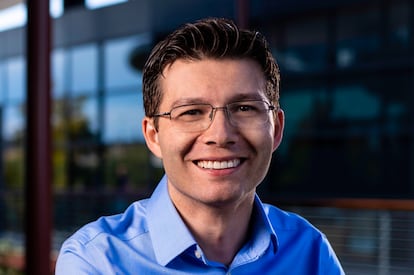
The Spanish biochemist Ira Espuny was part of the team from the Université libre de Bruxelles (Belgium) that, in 2013, managed to integrate human neurons into the brain circuits of a mouse for the first time. Espuny highlights that the new work has managed to reverse neuronal function and correct cell migration in human organoids grafted into rats. “Pasca’s group clearly demonstrates that these models are extremely versatile and incredibly useful for understanding human diseases and seeking potential therapeutic strategies, especially for those diseases for which research with laboratory animals has failed in the past to reveal useful treatments,” she says.
Espuny leads a small group at the University of Liège, dedicated to reprogramming cells from people with Alzheimer’s to generate brain organoids, which are cultured for up to nine months in her laboratory. The biochemistry team has also used these cerebroids to study the effect of the Covid virus on the human brain.
Sophie Muir endured years of uncertainty until, in 2016, doctors diagnosed her son Calvin. Then began her fight against Timothy Syndrome, a battle she fights literally from her kitchen table in her Gloucestershire home. “Calvin is now 16 years old and goes to a wonderful school for young people with learning difficulties, where they teach him crafts and gardening. He loves it. Despite the obstacles, in general, he is very happy,” says his mother hopefully. “Sergiu Pasca’s work shows that antisense oligonucleotides [gene patches] can provide a therapy to our community.”
Sign up for our weekly newsletter to get more English-language news coverage from EL PAÍS USA Edition
Tu suscripción se está usando en otro dispositivo
¿Quieres añadir otro usuario a tu suscripción?
Si continúas leyendo en este dispositivo, no se podrá leer en el otro.
FlechaTu suscripción se está usando en otro dispositivo y solo puedes acceder a EL PAÍS desde un dispositivo a la vez.
Si quieres compartir tu cuenta, cambia tu suscripción a la modalidad Premium, así podrás añadir otro usuario. Cada uno accederá con su propia cuenta de email, lo que os permitirá personalizar vuestra experiencia en EL PAÍS.
¿Tienes una suscripción de empresa? Accede aquí para contratar más cuentas.
En el caso de no saber quién está usando tu cuenta, te recomendamos cambiar tu contraseña aquí.
Si decides continuar compartiendo tu cuenta, este mensaje se mostrará en tu dispositivo y en el de la otra persona que está usando tu cuenta de forma indefinida, afectando a tu experiencia de lectura. Puedes consultar aquí los términos y condiciones de la suscripción digital.
More information
Archived In
Últimas noticias
The complicated life of Francesca Albanese: A rising figure in Italy but barred from every bank by Trump’s sanctions
Half of Scotland is in the hands of 420 property owners
Pinochet’s victims grapple with José Antonio Kast’s rise in Chile
Reinhard Genzel, Nobel laureate in physics: ‘One-minute videos will never give you the truth’
Most viewed
- Pablo Escobar’s hippos: A serious environmental problem, 40 years on
- Reinhard Genzel, Nobel laureate in physics: ‘One-minute videos will never give you the truth’
- Why we lost the habit of sleeping in two segments and how that changed our sense of time
- Charles Dubouloz, mountaineering star, retires at 36 with a farewell tour inspired by Walter Bonatti
- The Florida Keys tourist paradise is besieged by immigration agents: ‘We’ve never seen anything like this’

